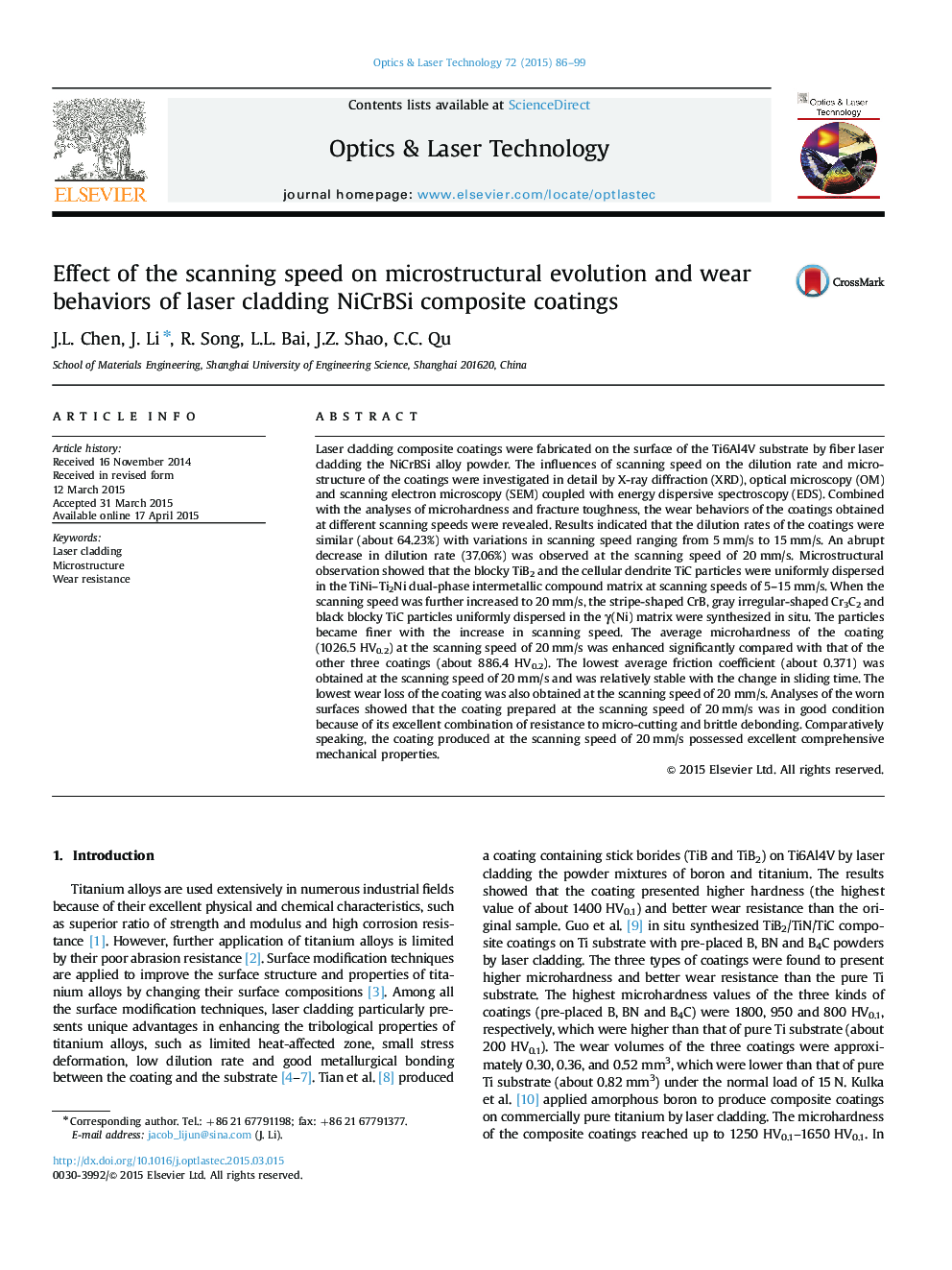| کد مقاله | کد نشریه | سال انتشار | مقاله انگلیسی | نسخه تمام متن |
|---|---|---|---|---|
| 733410 | 1461626 | 2015 | 14 صفحه PDF | دانلود رایگان |

• NiCrBSi composite coatings were prepared at different scanning speed 5–20 mm/s.
• The change in dilution rate of the coatings was explained by the enthalpy ΔHθT.
• The scanning speed had a significant effect on phase constituents of the coatings.
• The transformation of wear mechanisms of the coatings was explored in details.
• An appropriate increase in scanning speed improves wear resistance of the coatings.
Laser cladding composite coatings were fabricated on the surface of the Ti6Al4V substrate by fiber laser cladding the NiCrBSi alloy powder. The influences of scanning speed on the dilution rate and microstructure of the coatings were investigated in detail by X-ray diffraction (XRD), optical microscopy (OM) and scanning electron microscopy (SEM) coupled with energy dispersive spectroscopy (EDS). Combined with the analyses of microhardness and fracture toughness, the wear behaviors of the coatings obtained at different scanning speeds were revealed. Results indicated that the dilution rates of the coatings were similar (about 64.23%) with variations in scanning speed ranging from 5 mm/s to 15 mm/s. An abrupt decrease in dilution rate (37.06%) was observed at the scanning speed of 20 mm/s. Microstructural observation showed that the blocky TiB2 and the cellular dendrite TiC particles were uniformly dispersed in the TiNi–Ti2Ni dual-phase intermetallic compound matrix at scanning speeds of 5–15 mm/s. When the scanning speed was further increased to 20 mm/s, the stripe-shaped CrB, gray irregular-shaped Cr3C2 and black blocky TiC particles uniformly dispersed in the γ(Ni) matrix were synthesized in situ. The particles became finer with the increase in scanning speed. The average microhardness of the coating (1026.5 HV0.2) at the scanning speed of 20 mm/s was enhanced significantly compared with that of the other three coatings (about 886.4 HV0.2). The lowest average friction coefficient (about 0.371) was obtained at the scanning speed of 20 mm/s and was relatively stable with the change in sliding time. The lowest wear loss of the coating was also obtained at the scanning speed of 20 mm/s. Analyses of the worn surfaces showed that the coating prepared at the scanning speed of 20 mm/s was in good condition because of its excellent combination of resistance to micro-cutting and brittle debonding. Comparatively speaking, the coating produced at the scanning speed of 20 mm/s possessed excellent comprehensive mechanical properties.
Journal: Optics & Laser Technology - Volume 72, September 2015, Pages 86–99